Tourist attractions, including things to do in Chiang Rai such as visiting stunning temples, exploring peaceful tea plantations, and meeting local hill tribes. Located in northern Thailand, Chiang Rai is often overlooked next to Chiang Mai — but it offers a calm and culturally rich experience. In this guide, you’ll find the top places to visit and fun activities for all types of travelers.
Why Visit Chiang Rai? Location, Culture & Travel Appeal
Chiang Rai is a northern Thai city near the borders of Laos and Myanmar, part of the Golden Triangle region. Surrounded by mountains and rivers, it’s about 190 km from Chiang Mai. While smaller, Chiang Rai offers a peaceful vibe, colorful temples, and local culture. It’s perfect for travelers looking for unique things to do in Chiang Rai beyond the crowds.
- Check out Unique things to do in Chiang Mai
What is the best time to visit Chiang Rai?
The best time to visit Chiang Rai is between November and February, when the weather is cool and dry. Days are sunny, nights are crisp, and it’s ideal for outdoor exploring—from tea fields to temple visits. This season also brings festivals like Loy Krathong and Thai New Year.
March to May gets hot, with haze in some areas. June to October is the rainy season—great for fewer crowds and lush landscapes, but some rural spots may be harder to reach.
- Check out the best time to visit Thailand
Things to Do in Chiang Rai
Explore Chiang Rai’s most iconic temple, a surreal masterpiece of white glass and mirrors created by local artist Chalermchai Kositpipat. There are handful of activities and local experiences, here are a list of what to do;
- Check out Luxury Thailand Tours
1. Wat Phra Kaeo: Chiang Rai’s Sacred Gem
Wat Phra Kaew is one of Chiang Rai’s oldest and most revered temples. It dates back to the 14th century and gained historical importance in 1434 when a lightning strike revealed the Emerald Buddha, hidden inside a chedi.
Although the original statue now resides in Bangkok, a delicate jade replica stands in its place today. The temple complex is calm and shaded, with classic Lanna-style architecture and a small museum showcasing ancient Buddhist artifacts. It’s not just a peaceful place for quiet reflection, it’s also a window into Chiang Rai’s deep spiritual roots and royal past.
2. Wat Rong Khun: The White Temple
Wat Rong Khun is a modern marvel and the most photographed spot in Chiang Rai. Construction began in 1997, led by visionary Thai artist Chalermchai Kositpipat, who set out to create a living piece of art that reflects Buddhist teachings.
The all-white temple, covered in mirrored mosaics, symbolizes purity and enlightenment. As you cross the bridge guarded by ghostly hands reaching up from below, you enter the ubosot (main hall), where traditional Buddhist themes meet pop culture. If you look closely, you might spot superheroes or spaceships hidden among the murals. The temple is still a work in progress, but its bold creativity and symbolism make it a must-see.
3. Wat Rong Suea Ten: The Blue Temple
Wat Rong Suea Ten, or the Blue Temple, is one of Chiang Rai’s newer attractions, completed in 2016. It was designed by a student of Chalermchai, and like its white counterpart, it’s rich with modern artistic touches.
Built on the site of an abandoned temple once home to tigers, hence the name “suea ten,” meaning “dancing tiger”. The new structure stuns visitors with its deep sapphire blue and gleaming gold details. Inside, a giant white Buddha sits serenely under swirling blue murals that depict Buddhist stories in a dreamlike style.
The Blue Temple feels more mystical than traditional, and its vivid colors and calm atmosphere leave a lasting impression.
4. Wat Huay Pla Kang
Wat Huay Pla Kang sits peacefully on a hilltop just outside Chiang Rai city. What draws most visitors here is the enormous white statue of Guan Yin, the Goddess of Mercy, which overlooks the valley with a calm, protective gaze. Standing 23 stories tall, the statue is hollow inside, and visitors can ride an elevator to the top to enjoy sweeping views of the surrounding countryside.
The temple grounds also feature a graceful 9-tiered pagoda and a white sanctuary decorated with detailed carvings. With a blend of Thai and Chinese architectural styles, Wat Huay Pla Kang offers a unique spiritual atmosphere that feels both majestic and serene.
Activities & day trips from Chiang Rai
5. Singha Park
Just a short drive from the city, Singha Park offers open green spaces, flower gardens, and wide views of the surrounding hills. Originally a barley farm, it’s now a family-friendly escape where you can rent a bicycle, zipline across the lake, or sip tea with a view of the fields. The park’s well-kept paths and peaceful atmosphere make it a lovely way to spend a relaxed afternoon outdoors.
6. Golden Triangle
For something a little more dramatic, head north to the Golden Triangle, where Thailand, Laos, and Myanmar meet at the confluence of the Ruak and Mekong rivers. Once known for its opium trade, the area now offers a peaceful overlook, with riverboat rides, hilltop viewpoints, and museums exploring its complex history. It’s a must-visit for those curious about the region’s cultural and political past, and the views are unforgettable.
7. Khun Korn Waterfall
For a bit of adventure, take the trail to Khun Korn Waterfall, the tallest in Chiang Rai Province. A short hike through the forest brings you to the base of this 70-meter cascade, where cool mist rises from the rocks and birds echo through the trees. It’s not difficult to reach, but it feels wonderfully wild, like you’ve stumbled into a secret corner of the jungle.
8. Choui Fong Tea Plantation
Set among the rolling hills of Mae Chan, Choui Fong Tea Plantation is as beautiful as it is refreshing. The neatly trimmed rows of tea stretch out like waves, and the on-site café serves fresh green tea desserts and drinks with panoramic views. Come early for soft morning light or stay late for golden sunsets, it’s the perfect place to slow down and enjoy a different side of Chiang Rai.
Best Things to Do in Chiang Rai at Night
9. The Night Bazaar
When the sun goes down, the Night Bazaar becomes one of the top things to do in Chiang Rai at night. Just steps from the central bus station, this vibrant market comes alive with the scent of street food, the sound of live traditional music, and rows of handmade goods. It’s the perfect place to taste northern Thai favorites like khao soi, grilled meats, or sweet sticky rice, while browsing colorful crafts and chatting with friendly vendors. The laid-back atmosphere makes it a relaxing way to end your day and experience Chiang Rai’s local charm.
10. Overnight stat at Hill Tribe Villages
Beyond the city, the hills surrounding Chiang Rai are home to several ethnic minority groups, including the Akha, Lahu, Karen, and Hmong communities. Visiting these villages offers a glimpse into a different way of life, where traditions are passed down through generations.
You’ll see homes built from bamboo and wood, women weaving textiles by hand, and daily life unfolding at a slow and steady pace. Some tours offer respectful cultural exchanges, allowing you to learn about traditional customs, farming, or herbal medicine, while supporting sustainable tourism. It’s a humbling and enriching experience that deepens your understanding of northern Thailand’s cultural diversity.
11. Pong Phra Bat Hot Springs
Just about 12 kilometers from the city center, Pong Phra Bat is one of the most accessible hot springs in Chiang Rai. This peaceful spot is nestled among trees and rice fields, and it’s where many locals come to unwind. You’ll find both open-air communal pools and private soaking tubs, with warm mineral-rich water that’s believed to ease muscle tension and improve circulation. The atmosphere here is simple and laid-back, making it perfect for a quiet afternoon away from the crowds.
12. Huay Mak Lium Hot Springs
Located deeper in nature within Mae Suai District, Huay Mak Lium Hot Springs feels more remote and untouched. Set within the lush forest of Lam Nam Kok National Park, it offers a more rustic and natural experience. The springs are surrounded by tall trees and shaded walking paths, with picnic areas nearby where locals gather with friends and family. It’s ideal if you’re looking to combine relaxation with a little time in the woods.
Chiang Rai’s museum & Art galleries
13. Baan Dam Museum (The Black House)
Baan Dam, or the Black House, is one of Chiang Rai’s most intriguing and provocative artistic sites. Created by the late national artist Thawan Duchanee, this sprawling complex features more than 40 dark wooden buildings filled with artworks, animal bones, skins, and symbolic installations. It’s not a temple, though it’s often mistaken for one.
Instead, it’s a deeply personal exploration of death, nature, and power – raw, bold, and unlike anything else in Thailand. Walking through Baan Dam feels like stepping into an artist’s inner world, at once eerie and fascinating.
14. Art Bridge Chiang Rai
Just north of the city, Art Bridge is the center of Chiang Rai’s contemporary art community. Opened in 2012 by a collective of local artists, this gallery hosts rotating exhibitions of paintings, sculpture, photography, and mixed media. It’s a quiet and thoughtful space that invites you to slow down and reflect. The adjoining café is also a great spot to take a break, savor something warm, and soak in the creative atmosphere. If you want to see what’s emerging from northern Thailand’s current art scene, this is the place.
15. Chalermchai Kositpipat’s Studio
For fans of Wat Rong Khun, a visit to Chalermchai Kositpipat’s studio is a meaningful extension of the experience. Located near the White Temple, this personal workspace gives you a closer look at the artist’s original sketches, experimental paintings, and other works in progress. It adds another layer to his bold, symbolic style, helping visitors appreciate the decades of vision and dedication behind one of Thailand’s most iconic landmarks.
Getting to Chiang Rai & Getting Around the City
Reaching Chiang Rai is easier than many travelers expect, and once you’re there, getting around is simple, especially if you’re up for a little adventure.
The most convenient way to reach Chiang Rai is by plane. Chiang Rai International Airport (Mae Fah Luang Airport) is just about 8 kilometers from the city center and offers direct domestic flights from Bangkok, Chiang Mai, and a few international destinations. From the airport, you can take a taxi or a private transfer to your hotel.
Bus, Tuk tuk & Motorbike
If you’re traveling from Chiang Mai, buses are a popular and affordable option. They depart frequently from Chiang Mai Bus Station and take around 3-4 hours. Ticket prices range from 200-400 THB (5-11 USD) depending on the class and comfort level. For more flexibility, you can also rent a motorbike or car and make the scenic drive yourself, although the roads can be winding.
Chiang Rai’s city center is compact and easy to explore on foot, while destinations outside the center are far, and there are a few transportation options. Motorbike rental is the most popular among independent travelers, costing around 200-300 THB (5-8 USD) per day. If you’re traveling in a group or prefer more comfort, hiring a private car with a driver costs around 1,500-2,000 THB (40-55 USD) for a full day, depending on distance and route.
Local tuk-tuks and songthaews (shared red pickup trucks) are available for short rides within town. Tuk-tuk fares usually start at 50 THB (1.5 USD) for nearby spots, while longer rides or private hires may cost more. Songthaews are cheaper but less predictable, especially if you’re heading to places outside the main routes.
Where to stay in Chiang Rai?
There are many options for different budget, backpacker hostels, cozy guesthouses, and peaceful nature resorts. Stay in the city center if you want easy access to the Night Bazaar, temples, and local eats. Budget rooms start from 300 THB (8 USD), with mid-range hotels around 800-1,500 THB (22-40 USD) per night.
For a more scenic escape, head to the countryside near Singha Park or tea plantations, where you’ll find quiet resorts with mountain views. Areas like Ban Du or near Wat Rong Khun are also great picks if you’re focusing on sightseeing. Wherever you stay, Chiang Rai is always warm and welcoming.
1-Day to 3-Day Itineraries for Chiang Rai
For most travelers, 2 to 3 days is the sweet spot to explore the city and its surroundings without feeling rushed.
A 2-day Chiang Rai itinerary typically includes the must-see temples like Wat Rong Khun, Wat Rong Suea Ten, and Wat Huay Pla Kang, stopping by the Baan Dam Museum, and spending your evening enjoying street food and local crafts at the Night Bazaar. You’ll also have time for a visit to Singha Park or a relaxing moment at a nearby hot spring..
If you have an extra day, a 3-day itinerary lets you explore more scenic spots such as the Golden Triangle, Khun Korn Waterfall, and Choui Fong Tea Plantation, or visit hill tribe villages for a glimpse of local life.
Local foods to eat in Chiang Rai
The Chiang Rai local cuisine is earthy, spicy, and deeply rooted in northern Thai traditions, offering something that feels both home-cooked and unforgettable.
Start with a bowl of khao soi, a curry noodle in a creamy broth, topped with crispy noodles, pickled greens, and a squeeze of lime. It’s warm, rich, and comforting in all the right ways. Then there’s sai oua, a grilled pork sausage packed with lemongrass and chili, fragrant and flavorful with every bite.
Want something truly local? Try nam ngiao, a tangy tomato noodle soup with pork and a gentle heat that lingers. Add a ball of sticky rice to the table (eaten with your fingers, northern-style), plus some jeow (northern chili dips made from eggplant or sweet pork paste). And if you’re feeling curious at the night markets, yes, those crispy fried insects are real, and locals say they’re not bad at all.
Essential tips for your Chiang Rai trip
Dress appropriately
Temples require modest clothes, covering the shoulders and knees. Don’t forget to wear shoes that are easy to slip on and off, as you’ll be removing them often. If you plan to walk a lot or visit natural spots like waterfalls, comfortable walking shoes or sandals with a good grip are a must.
Best time of day to visit
The best time to explore temples, parks, or outdoor sites is in the early morning (around 8:00-10:30 AM) or late afternoon (after 3:30 PM).
Carry cash
While some restaurants and hotels accept cards, most local shops, night markets, and street food stalls deal only in cash. Make sure you always have enough Thai baht, especially if you’re going to remote areas.
Be careful with transport
Motorbike rental is popular, but roads can be steep and slippery, and accidents are not uncommon, especially for travelers unfamiliar with local traffic. If unsure, hire a driver or join a tour.
Chiang Rai Travel FAQs
The best time to visit Chiang Rai is between November and February. The weather is cool, dry, and perfect for exploring temples, mountains, and night markets.
Chiang Rai is less crowded than Chiang Mai and offers a more peaceful, off-the-beaten-path experience. It’s ideal if you love unique temples, nature, and a slower pace.
Two to three days is enough to see Chiang Rai’s highlights, including the White Temple, Blue Temple, Black House, and nearby day trips like the Golden Triangle.
Yes, Chiang Rai is safe and welcoming for tourists. Just follow common travel precautions and be respectful at temples and local villages.
Final thought on things to do in Chiang Rai
Chiang Rai is absolutely worth visiting for its peaceful charm, stunning temples, and rich northern culture. It may be quieter than other Thai cities, but that’s what makes it unforgettable. A place that stays with you, long after you’ve left.

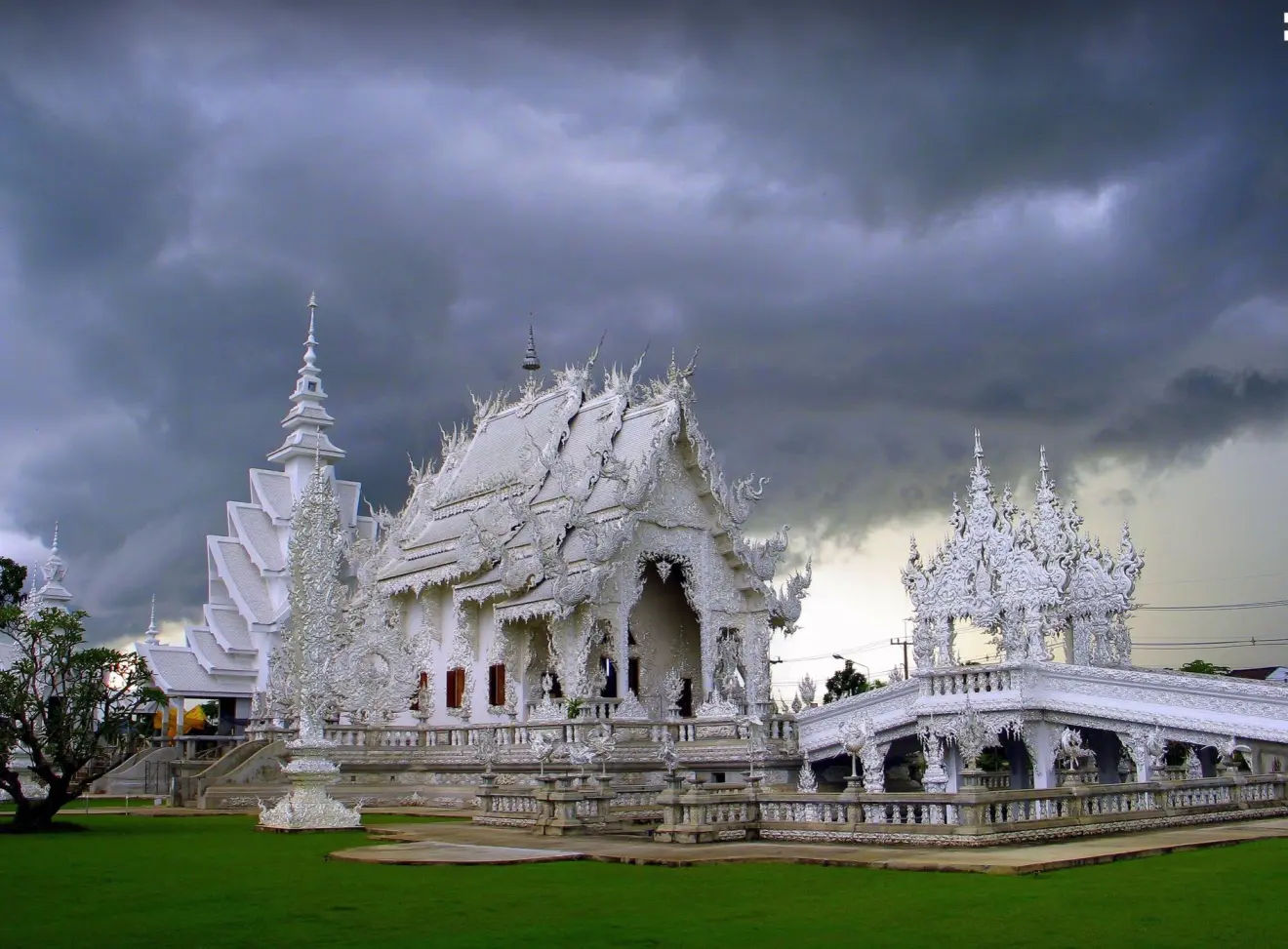
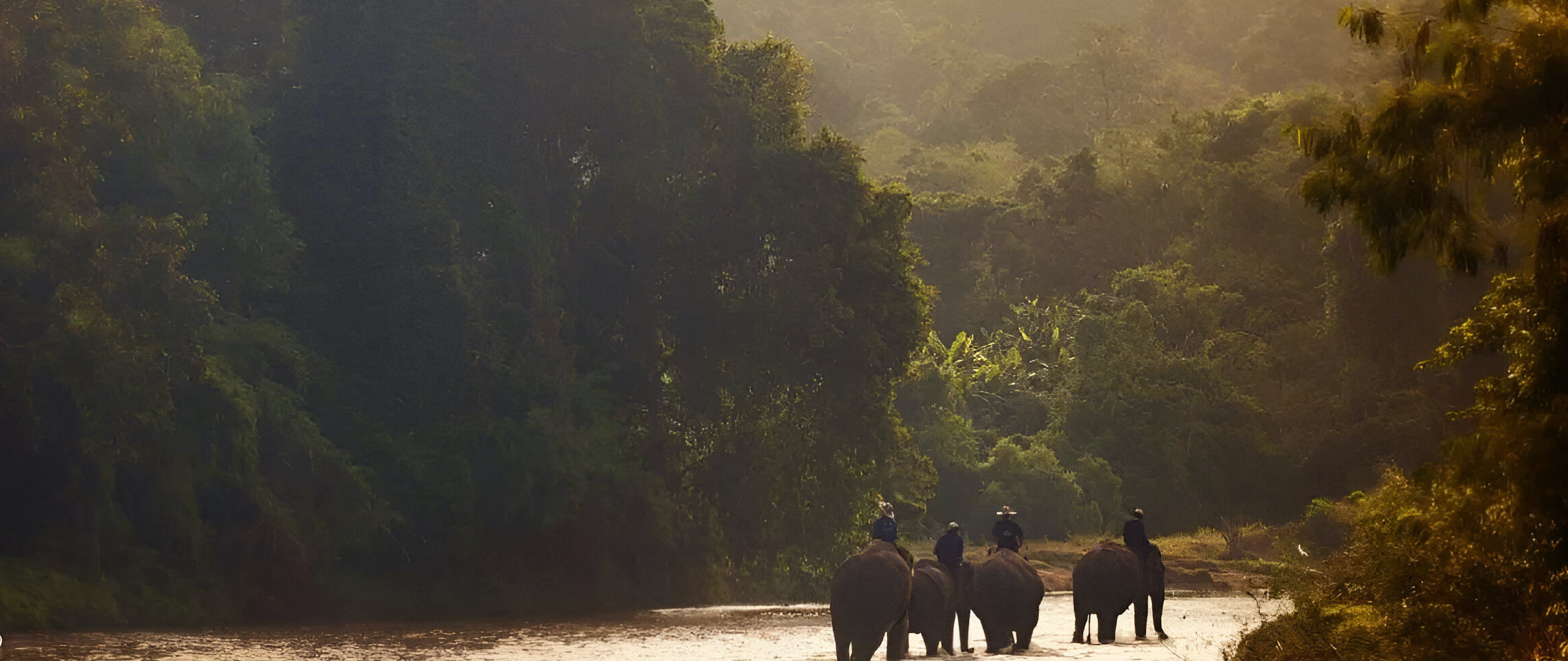

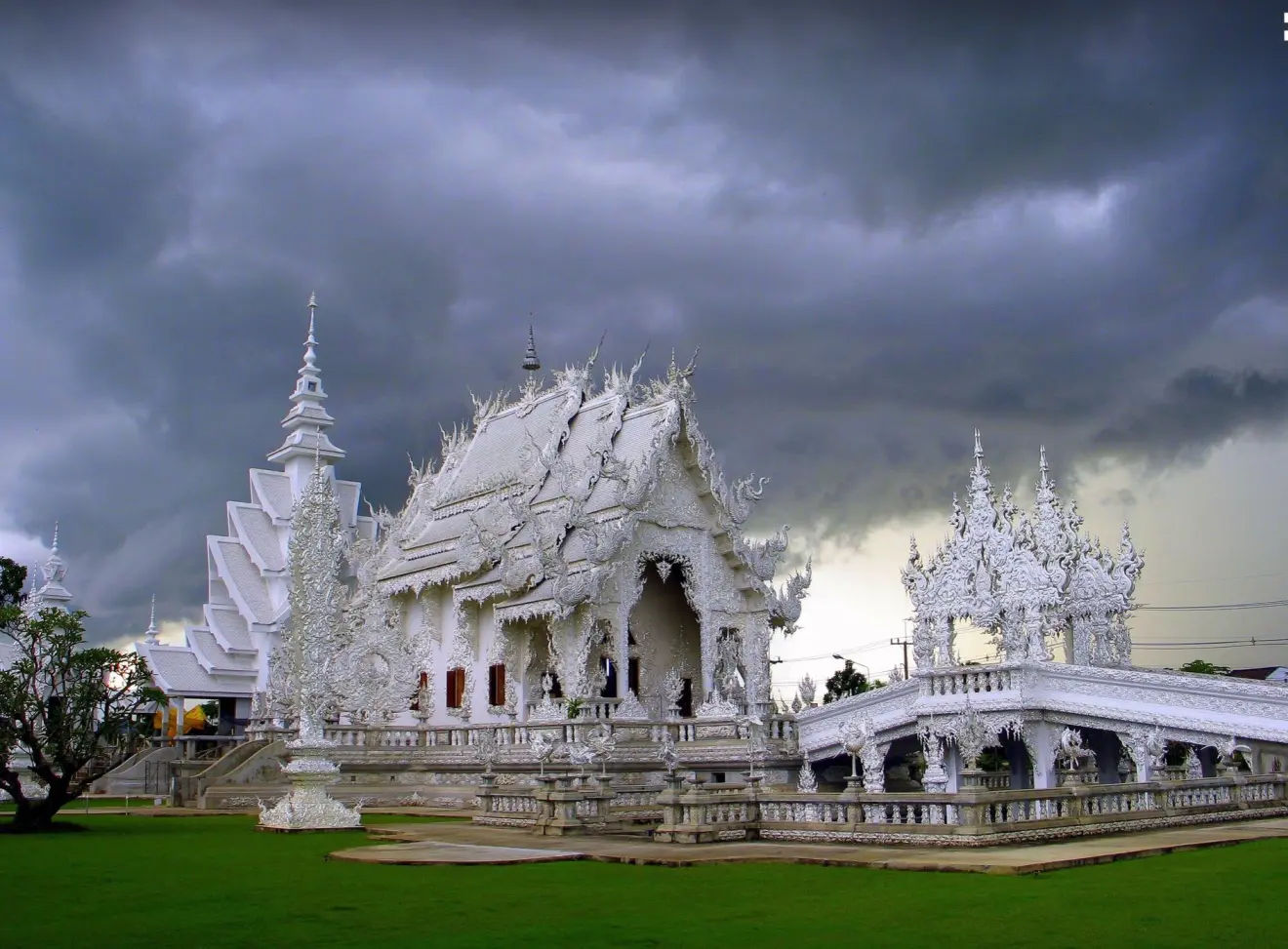

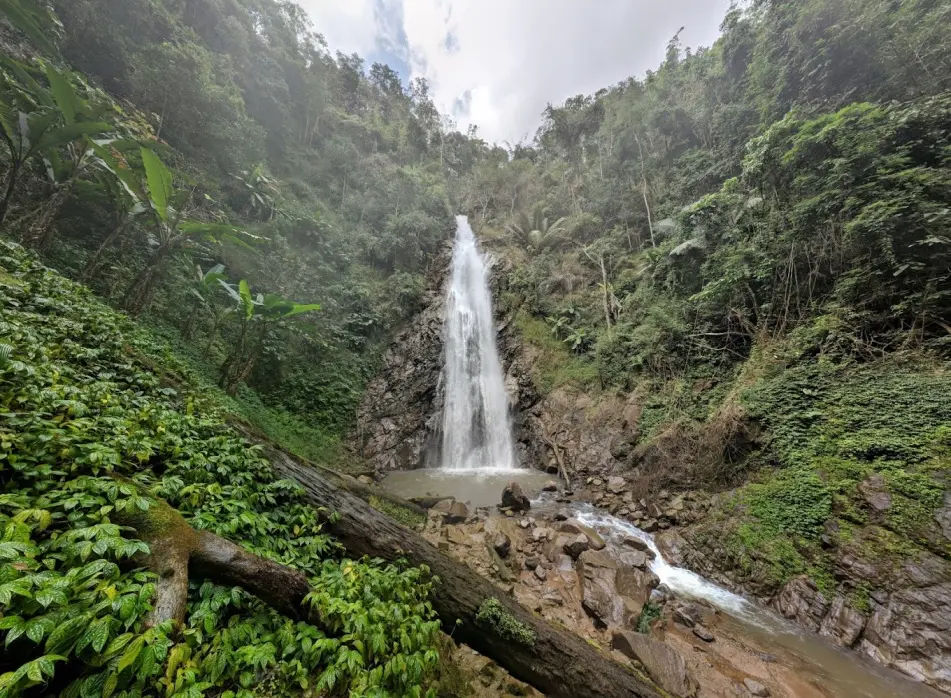
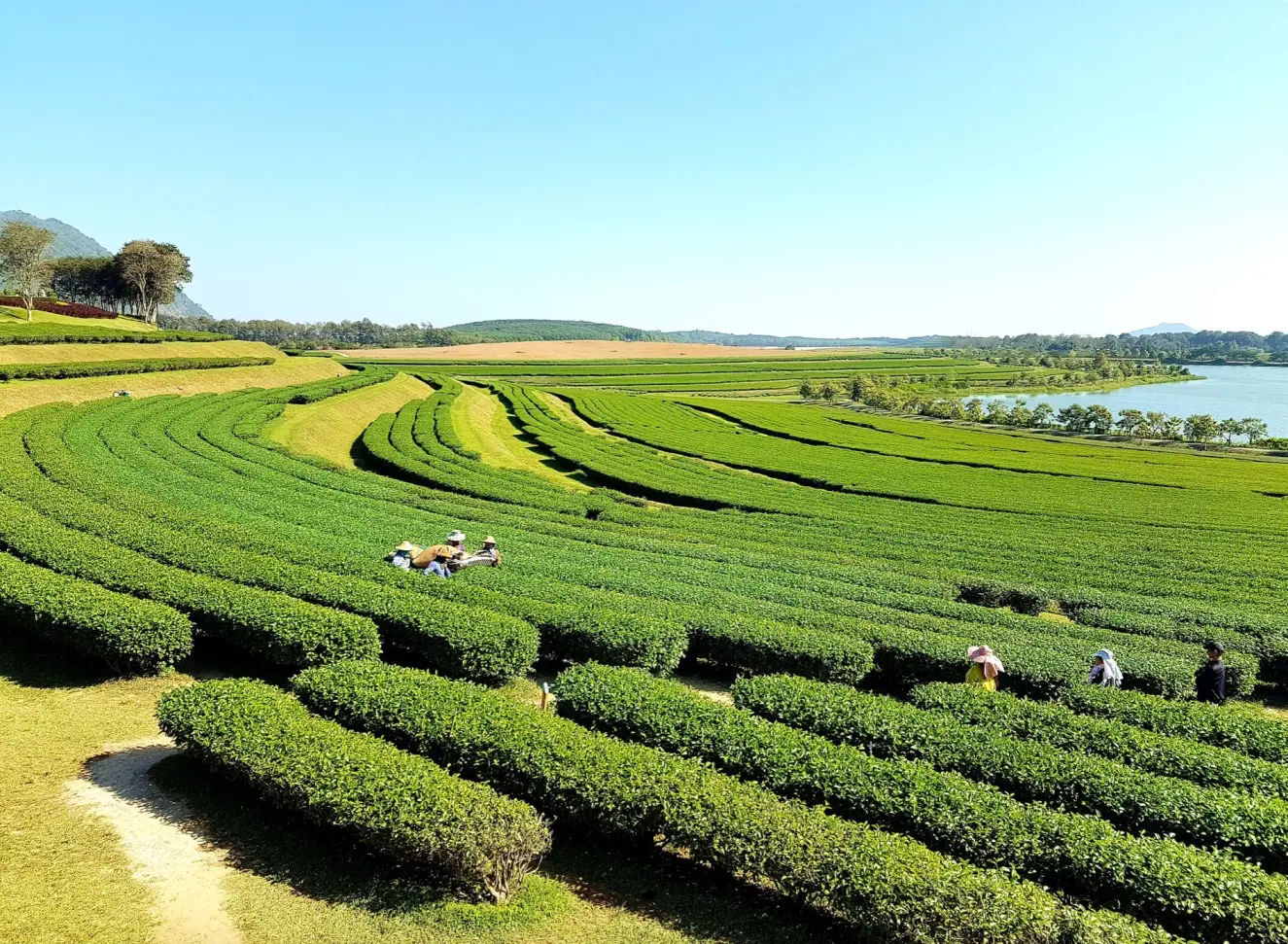
You May Also Like
Long Coc Tea Hills in Phu Tho: A Hidden Photography Spot Near Hanoi
Long Coc Tea Hills in Phu Tho is a breathtaking hidden gem in northern Vietnam, ...
The Ultimate Guide For Visiting Visit Vietnam In February: Weather, Festivals & Itineraries
Imagine walking through Hanoi’s Old Quarter as peach blossoms bloom in doorways, or sitting by ...
Toilets in Vietnam: A Traveler’s Guide for Squat Toilets, Public Bathrooms & Flushing Paper
Let’s be honest—when you travel, toilets matter more than you expect. In Vietnam, they quickly ...
20 Traditional Vietnamese Folk Games
Traditional folk games in Vietnam are more than just childhood pastimes. They are the living, ...
How to Register a Company in Vietnam (2026 Guide)
Foreign investors planning to do business in Vietnam face a multifaceted legal system and bureaucratic ...
Visiting Vietnam in January 2026: Weather, Costs, Festivals & Travel Tips
I visited Vietnam in January 2026, and I still remember the crisp, cool air in ...